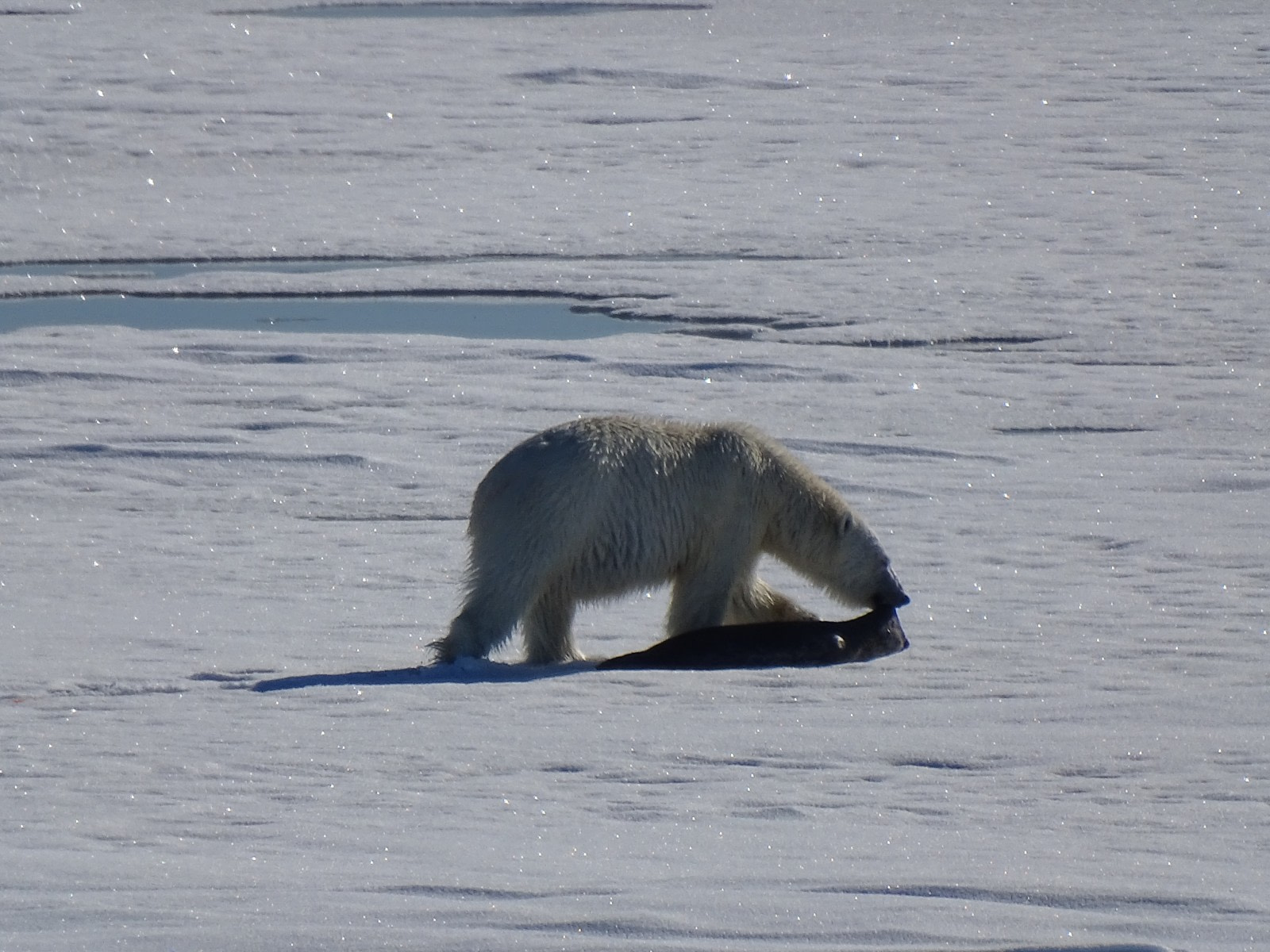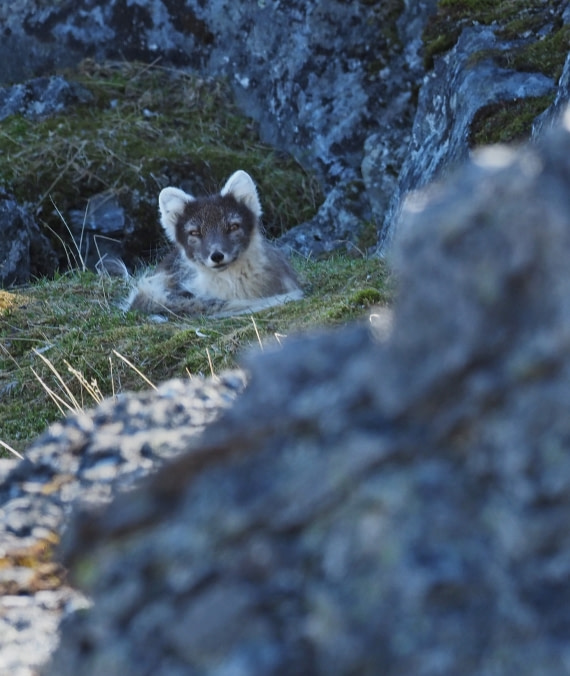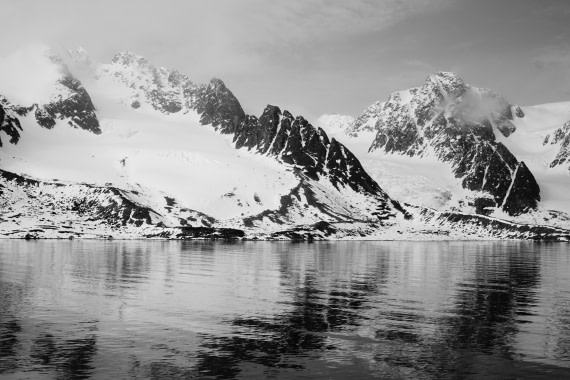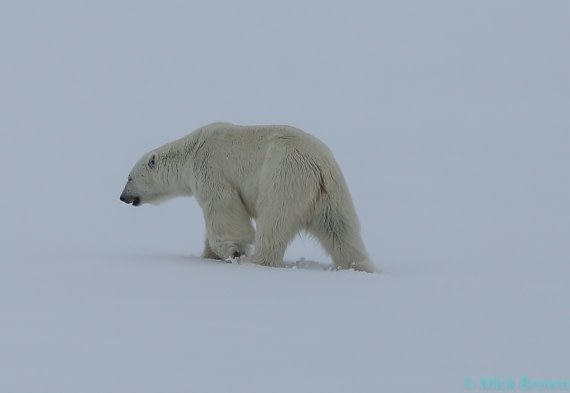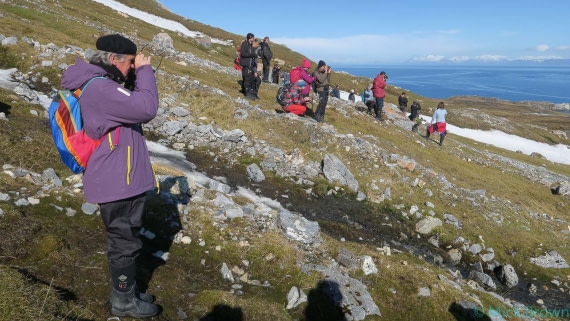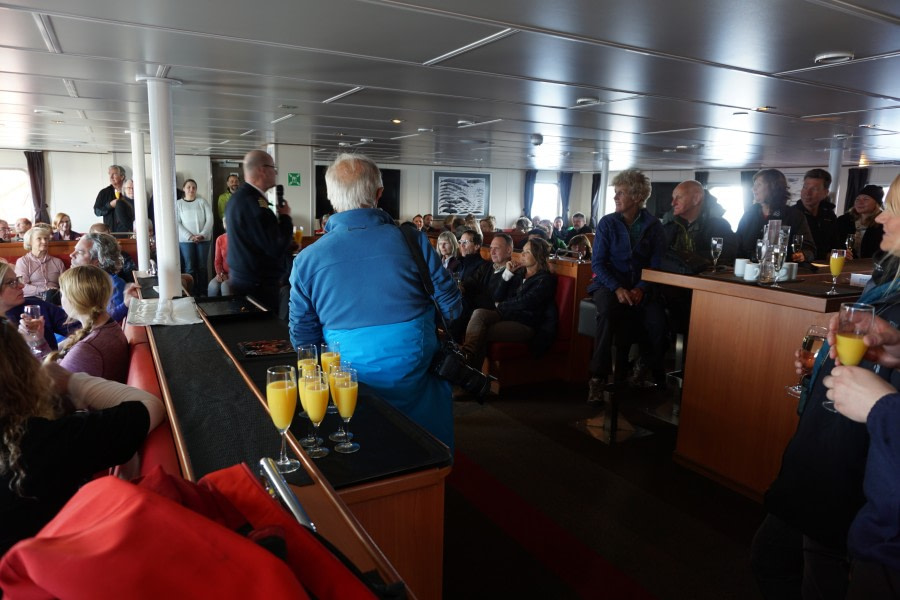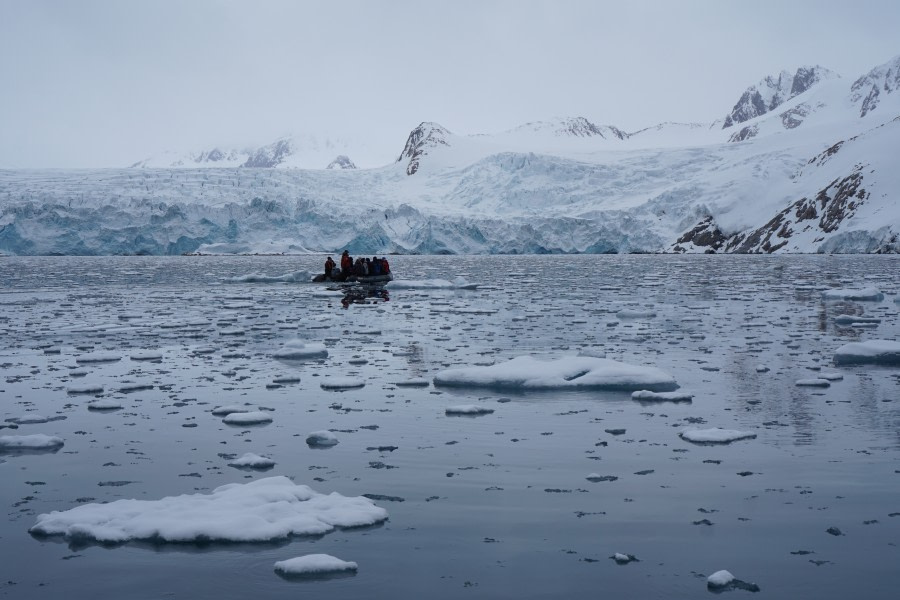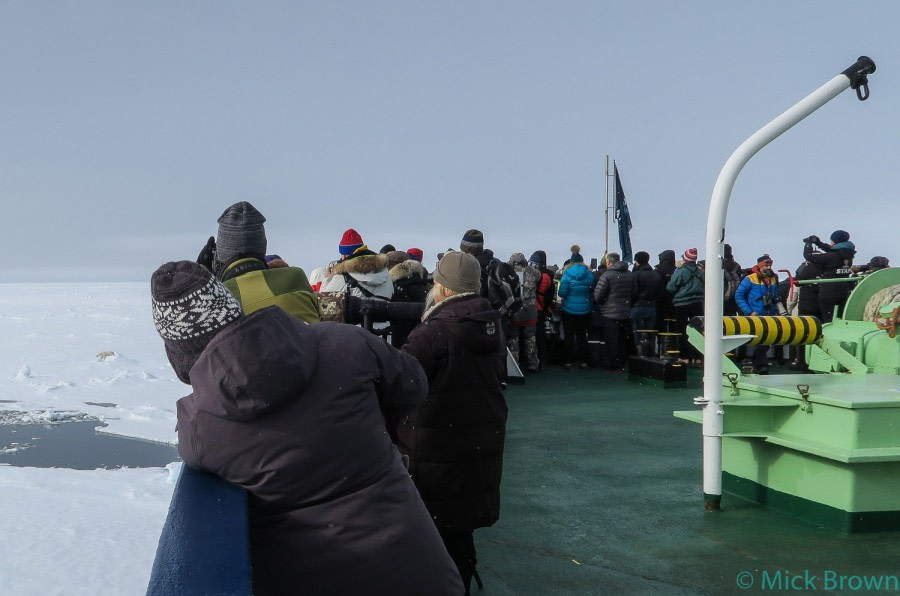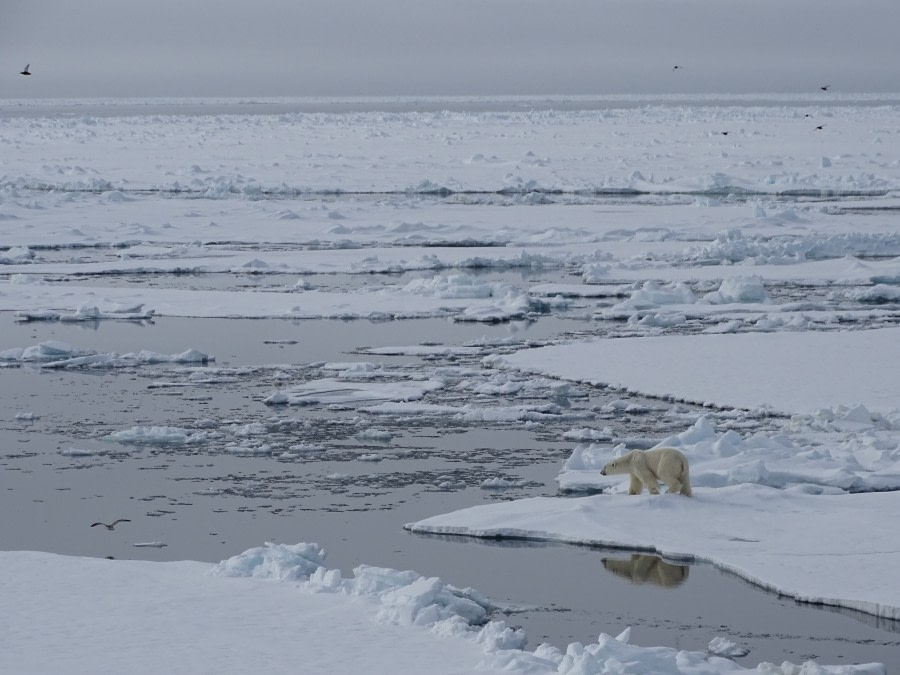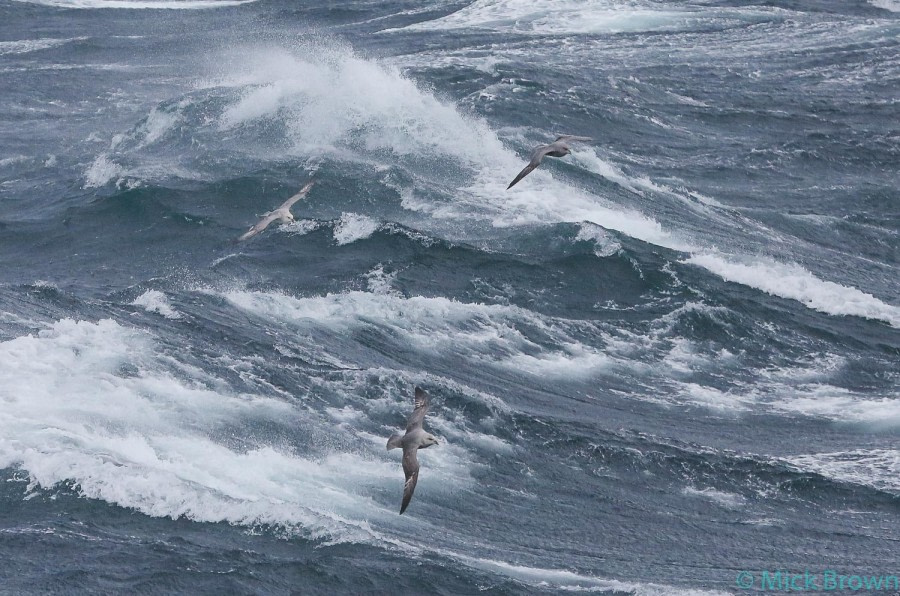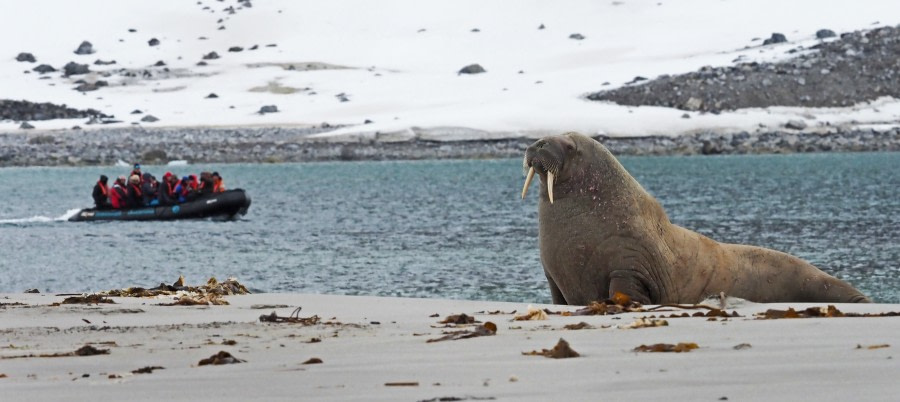| Date: |
15.06.2018 |
| Position: |
81°50.1`N, 020°58.7`E |
| Wind: |
calm |
| Weather: |
overcast, sunshine |
| Air Temperature: |
+2 |
It is a quiet morning. The Ortelius lies embedded in the loose pack-ice, amidst the ice-floes.
What a very special experience to spend the night on an all-quiet ship in a completely white world. One can only wonder how many people would have spent the night further north of our current position…
After a filling breakfast, everyone’s mind turned to the focus of the day, finding polar bears! The weather was perfect, very good visibility, a bit overcast and no wind. It did not take long until the first polar bear has been spotted. A wonderful male polar bear, around 12 years old with a little scar on the chest. He certainly was curious, sniffing in the air, trying to get a good scent of us, but did not come closer to the ship. Light conditions have been perfect, a good opportunity to get some pictures with the reflection of the bear in the sea. After lunch we found our second bear of the day, another male polar bear. This bear had a scar on his right front leg, very typically for male bears who already competed over the mating right.
It too moved on across the ice and although we didn’t get very close we had good views of the ‘King of the Arctic’ as it crossed the ice with ease. Later in the afternoon, around four o`clock, another bear has been seen, showing a “strange” behaviour. Still far in the distance this hungry bear was clearly on a mission, walking in the direction of a seal resting on the edge of it`s breathing hole. The bear was moving very slow in a lowered position, sometimes stopping and looking up towards the seal. This way of hunting is called “Stalking on ice”. Suddenly the bear changed his hunting strategy and lowered itself gently in the water some distance away from the seal. Now everything was happing very quick. The bear dove in direction breathing hole, launched itself out of the water to attack. It grabbed the young ringed seal within seconds and killed it. What a show!!! This hunting method is called aquatic stalk.
The ship now approached closer to the bear and we had a good look on the female bear and its prey. She dragged the dead seal away from the breathing hole and started to hide it in the snow. After some time of good observation, we left her feeding. At recap we learned more about belugas and the different hunting methods of polar bears.
After this most special day on a ‘Polar Bear Special’, the fog rolled over the ice and it was time for us to turn south.
